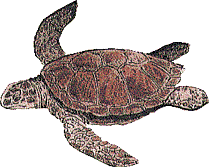
The Aquatic Field Investigation is the central investigation in the JASON VII curriculum, designed to help students understand the research that will be undertaken during the JASON expedition by having them conduct a parallel study in their local communities. Students will study an aquatic habitat (lake, river, creek, runoff, etc.) in their local area, making observations and collecting data about its biotic and abiotic characteristics.
Online communications tools will be used to facilitate students sharing information and measured data, and encourage them to collaborate with other students in the JASON network to develop a larger understanding of the type of aquatic habitat they are studying. Students participating in the study will introduce themselves online, describe background work they are doing for their local investigation and describe the scope of their planned data collection. From these introductions, students will determine who else in the world is participating online and what bodies of water they are studying. Groups that are studying similar bodies of water or indeed the same watershed but from different locations, will be encouraged to collaborate and share data. As students collect data and draw conclusions about the health of their local environment, they will continue to share this information online.
How to participate:
- Read through Investigations 4, 5, and 6 in the JASON VII Curriculum. Investigation 4 introduces the field techniques that students will use to collect data and make observations of their local study site. The investigation includes student-directed Materials and Methods sheets that describe eight different measurements which students can do using tools that they build themselves. Most of the necessary materials are commonly available. However for convenience, they are also available in one place in the JASON VII Curriculum Kit.
- Choose an aquatic site to study. This can be any sort of aquatic habitat in your area. If you are participating in the JASON Project through a Primary Interactive Network Site (PINS), you might want to contact the PINS coordinator for information. Some PINS are already in contact with local nature centers and parks that may be good destinations for an aquatic study field trip. Once a site is chosen, schedule a field trip.
- Spend some time in the Teacher Discussion Group on the Internet. Read postings from other teachers find out how they are using this investigation with their classes. Introduce yourself and offer your plan for doing the Aquatic Investigation with your class. Try to coordinate with other teachers to make sure that other students will be sharing information at the same time as your students.
- Begin the local student investigation. The “For the Student” sections of the curriculum contain research articles and other background information about the importance of studying aquatic habitats and the techniques that scientists use. In addition to preparing for field work, students should also begin doing library research about the history of their aquatic site. This background research will help them to put their data in context. Investigation 6 in the curriculum gives guidelines for conducting background research and organizing the information.
- Before going into the field, students can practice their data gathering and measurement techniques in the classroom. Each student directed
Materials and Masters sheet in Investigation 4 has two parts: First, there is a classroom activity designed to demonstrate the use of each tool and measurement technique. This is followed by instructions for actually doing the measurements in the field. After learning about the field techniques, students can develop their plan for gathering data in the field.
- When students have researched their aquatic site and developed a plan to do their field work, they can go online and introduce themselves in the Student Discussion Group. This step is called “Putting Yourself on the Map.” The purpose of the introduction is to practice writing e-mail and also to let other people know what type of aquatic site you are studying. A sample introductory message is given in the JASON VII curriculum.
- Once online, students can look for other classes to collaborate with. Who else is out there and what types of aquatic areas are they studying? What types of collaborations will yield the most interesting study?
- Finally the day arrives to go outside and conduct field work! Go to the aquatic field site and take measurements and make observations. Record measurements on the data sheet provided in the curriculum.
- Post the data online. This can be done using an online form available from the JASON Project homepage, or using e-mail. A sample e-mail message showing data is found in the JASON curriculum. Be sure to include discussion of the data as well as just the raw numbers. What do you think your observations mean? What interesting comparisons would you like to make with data from other classes?
- Look at the data posted by your collaborators. Make comparisons and continue online discussion about your findings. This is an ongoing process.
JASON VII Home Page


JASON Project Homepage ||
Teachers' Guide ||
Students' Corner ||
Search
Gene Carl Feldman
(gene@seawifs.gsfc.nasa.gov)
(301) 286-9428
Todd Carlo Viola, JASON Foundation for Education (todd@jason.org)
Revised: 22 Nov 1995
![]()
![]()